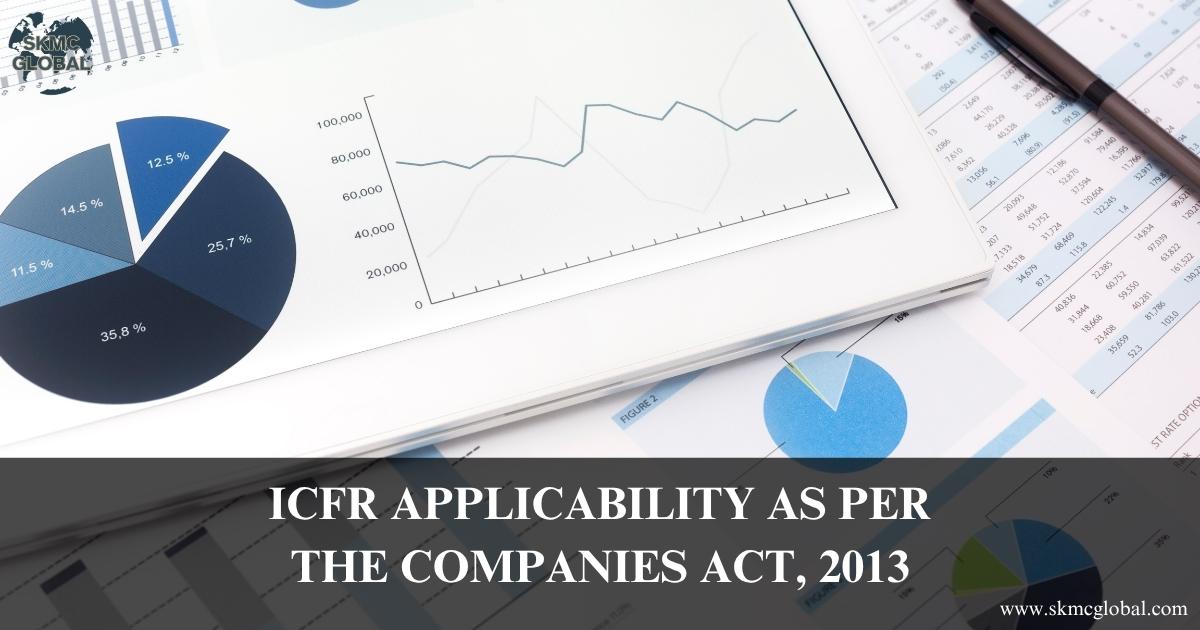
Introduction
Opening up the subsidiaries of the company in foreign nations is a strategic decision. A wholly-owned subsidiary is one of those that guarantees total control, full alignment of the objectives with the parent company's operations, and a distinct legal distinction. Globally, most of the corporations choose India as the location of such an investment due to its growth opportunities. In India, the opening of the company subsidiaries—particularly on the establishment of a wholly owned subsidiary—is a request for grappling with corporate, regulatory, and operating structures. This article sets out in a technical step-by-step fashion the process and synthesizes the latest reforms.
Choice and Definition
- Choose the legal structure, generally a private company limited by the Companies Act, 2013. This enables the foreign parent to wholly own an entity in India, thus creating a wholly owned subsidiary.
- Definition: A wholly owned subsidiary is a company whose share is owned by its parent as an independent legal entity capable of running independently. That firm in the instance of an Indian subsidiary company is a separate corporate entity but run under Indian law. The parent can further form an Indian subsidiary company as 100 % foreign-owned.
This establishes "what is wholly owned subsidiary company" by establishing usage.
Incorporation Process — Major Steps
1. Obtain Digital Signature Certificates (DSC) for signing authorities.
2. File Director Identification Numbers (DIN) for all future directors.
3. Reserve company name via MCA portal's RUN facility.
4. Draft and file incorporation papers (MOA, AOA), along with subscriber and director consent.
5. Appoint at least two directors and two shareholders—these can be local nominees to quicken formalities.
6. Once approved, get Certificate of Incorporation—you now have an Indian subsidiary as a separate legal corporate entity.
This is the basis for a company organization subsidiary where the parent company owns it in total and in full.
Compliance with Regulation after Incorporation
- FEMA & RBI: Join the Foreign Exchange Management Act. In some industries, 100 % FDI is permitted under the automatic route; therefore, a wholly owned subsidiary firm is feasible in some industries (e.g., in most industries).
- Layering is prohibited (Form CRL 1) as of July 14, 2025. The new Form CRL 1 requires that subsidiary layers be disclosed in detail, including the subsidiary, parent, CIN, and shareholding pattern. Unless exempted (e.g., WOS, foreign subsidiaries), excessive layering is forbidden.
- Companies (Compromises, Arrangements and Amalgamations) Rules: April 2025 draft MCA widens the ambit of fast-track merger to embrace a holding company with unlisted subsidiaries and between sister subsidiaries of the same company.
Financial Structure and Corporate Governance
- Minimum capital: After Companies Amendment in 2015, minimum paid up capital is not required. This simplifies the incorporation of the wholly owned subsidiary.
- Related party transactions: 2015 amendments have eased compliance regarding loans or guarantees extended to wholly owned subsidiary and exemption from related transactions, provided consolidated accounts are drawn.
- Board control: In accordance with the 2017 amendment that specifies subsidiaries of a company, control can either be established on majority voting rights or board membership, not just share capital.
-
Insurance: A new 2025 plan can raise the FDI cap from 74 % to 100 %, which may prompt foreign players to move JVs to wholly owned subsidiary forms.
-
Banking: Till mid-2025, a few foreign banks have made RBI requests to set up wholly owned subsidiary businesses, like Emirates NBD Bank PJSC, who has been approved in principle, and Sumitomo Mitsui Banking Corporation (SMBC), to apply for license.
Taxation and Costs
- Taxation: An Indian subsidiary company ordinarily pays corporate tax as for local companies—approximately 25 %. Foreign entities may have to attract higher rates (~40/50 %) based on conditions along with applicable surcharge.
- Fees: Filing and agency fees typically run between USD 7,500 to USD 20,000, based on complexity and agency.
- Transfer pricing & audit: A subsidiary company in India must comply with transfer pricing audits, GST, TDS, MAT, and statutory audit once a year.
Strategic and Operational Benefits
- Complete strategic control and freedom through a fully owned subsidiary harmonizes operating execution with parent ambitions.
- Permitting the opening of Indian bank accounts, local workforce hiring, owning IP, trading with domestic customers — establishing a robust operating hub.
- Facilitating access to programs such as Make in India, SEZ incentives, and production-linked incentives to support subsidiary business within India.
Risks and Challenges
- Integration of a wholly owned subsidiary is normally time-consuming compared to joint ventures or representative offices due to phases of registration, compliance, and interface with stakeholders.
- Governance friction: There could be disagreements between parent and Indian entity on strategic direction or resource allocation.
Structural Summary (Point wise Outline)
- Firm of law: Private limited company.
- Incorporation requirements: DSC, DIN, reservation of name, submission of MOA/AOA, minimum directors/shareholders.
- Ownership/control: 100 % foreign parent.
- Capital: No minimum; eased by 2015 reforms.
- Governance: Voting control and board definition, as per 2017 reform.
- Disclosure: New Form CRL 1 requires layer wise information from July 2025.
- Mergers: Fast track mergers to include diverse holding subsidiary scenarios (2025 draft).
- Sector specifics: Insurance and banking reforms opening FDI avenues for WOS.
- Cost/tax: USD 7.5–20k incorporation; ~40–50 % corporate tax; open to audits and compliance.
- Benefits: Control, legal certainty, access to schemes, local operations.
- Challenges: Complicated setup, governance coordination, and compliance burden.
New Regulatory Developments (2025 Highlights)
- With effect from July 14, 2025, the Form CRL 1 overhaul increases transparency in subsidiary India layering.
- Fast track merger regulations expanded from wholly owned subsidiary to unlisted as well as fellow subsidiaries of a company, enabling consolidation and restructuring.
- Insurance sector reforms: Opportunity for 100 % FDI can speed up the transition to subsidiaries of a company with 100 % foreign ownership.
- Banking sector: RBI’s easing approach demonstrated by approvals and applications for WOS banking arms.
Conclusion
Establishing a wholly owned subsidiary in India remains a premier method for foreign corporates to translate their global strategy into a local, legally recognised footprint. The process is regulated by a set of technical procedures—ranging from entity formation, structuring of capital, and compliance with regulatory filings such as Form CRL 1 and speed track merger templates. New regulatory reforms (2025) even further ease consolidation and openness, and sectoral reforms (banking, insurance) increase the viability of full ownership strategies. While costs, compliance, and governance demand careful planning, the advantages—in strategic command, market access, and operating flexibility—surpass the path for most ambitious global entrants.
Recent Posts
-
 Secretarial Audit for Unlisted and Private Compani...
Dec 19,2025
Secretarial Audit for Unlisted and Private Compani...
Dec 19,2025
-
 How to Get CTE and CTO under Environmental Laws in...
Nov 27,2025
How to Get CTE and CTO under Environmental Laws in...
Nov 27,2025
-
 Step by Step guide for appointment of Independent ...
Nov 06,2025
Step by Step guide for appointment of Independent ...
Nov 06,2025
-
 Liaison Office vs Branch Office: A comparative ana...
Sep 02,2025
Liaison Office vs Branch Office: A comparative ana...
Sep 02,2025
-
 Role of Shareholders Agreement in Startups and Inv...
Aug 30,2025
Role of Shareholders Agreement in Startups and Inv...
Aug 30,2025
-
 Setting Up a Wholly Owned Subsidiary (WOS) in Indi...
Aug 12,2025
Setting Up a Wholly Owned Subsidiary (WOS) in Indi...
Aug 12,2025
-
 Arbitration v/s Litigation in India...
Aug 05,2025
Arbitration v/s Litigation in India...
Aug 05,2025
-
 Declaration of Dividend under Companies Act, 2013...
Aug 02,2025
Declaration of Dividend under Companies Act, 2013...
Aug 02,2025
-
 What is MSME Form 1 and how it can be filed?...
Aug 01,2025
What is MSME Form 1 and how it can be filed?...
Aug 01,2025
-
 What is CSR and how to compute the contribution am...
Jul 31,2025
What is CSR and how to compute the contribution am...
Jul 31,2025
-
 Process for removal of company auditor under Compa...
Jul 31,2025
Process for removal of company auditor under Compa...
Jul 31,2025
-
 What is SBO Compliance and when it is needed?...
Jul 29,2025
What is SBO Compliance and when it is needed?...
Jul 29,2025
-
 Role of Key Management Personnel and their appoint...
Jul 28,2025
Role of Key Management Personnel and their appoint...
Jul 28,2025
-
 Registering a Partnership Firm in India...
Jul 28,2025
Registering a Partnership Firm in India...
Jul 28,2025
-
 Procedure to strike off a company...
Jul 28,2025
Procedure to strike off a company...
Jul 28,2025
-
 sox and internal control...
Jul 17,2025
sox and internal control...
Jul 17,2025
-
 ICFR Applicability as per the Companies Act, 2013...
Jul 15,2025
ICFR Applicability as per the Companies Act, 2013...
Jul 15,2025
-
 Concept of Sweat Equity Shares and its uses...
Jun 25,2025
Concept of Sweat Equity Shares and its uses...
Jun 25,2025
-
 Whether loans and borrowing are considered as depo...
Jun 18,2025
Whether loans and borrowing are considered as depo...
Jun 18,2025
-
 What are the major compliance for unlisted compani...
Jun 05,2025
What are the major compliance for unlisted compani...
Jun 05,2025
-
 A Guide to Compensation to Director in Indian Corp...
Jun 04,2025
A Guide to Compensation to Director in Indian Corp...
Jun 04,2025
-
 Loans to Company Directors- A Legal and Ethical Fr...
Jun 04,2025
Loans to Company Directors- A Legal and Ethical Fr...
Jun 04,2025
-
 Top 7 Things You Must Know About External Commerci...
May 16,2025
Top 7 Things You Must Know About External Commerci...
May 16,2025
-
 Integrating CSR into Your Business Model:A Step-by...
May 14,2025
Integrating CSR into Your Business Model:A Step-by...
May 14,2025
-
 What are the applicable Labour Laws in HR (Human R...
May 14,2025
What are the applicable Labour Laws in HR (Human R...
May 14,2025
-
 Unveiling the PRAVAAH Portal: A Comprehensive Guid...
Apr 18,2025
Unveiling the PRAVAAH Portal: A Comprehensive Guid...
Apr 18,2025
-
 FLA Return and its compliance...
Feb 08,2022
FLA Return and its compliance...
Feb 08,2022
-
 Process of closure of Branch office in India...
Dec 30,2021
Process of closure of Branch office in India...
Dec 30,2021
-
 Steps to Shut down the Liaison Office in India...
Sep 14,2021
Steps to Shut down the Liaison Office in India...
Sep 14,2021
-
 Procedure for closure of Project Office in India...
Aug 10,2021
Procedure for closure of Project Office in India...
Aug 10,2021
